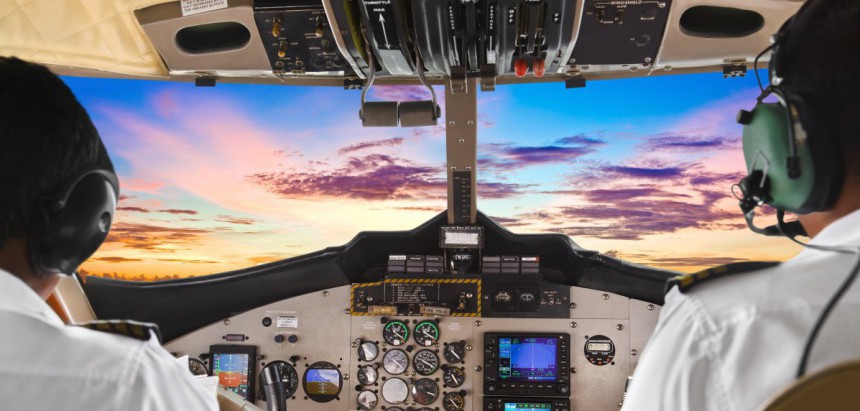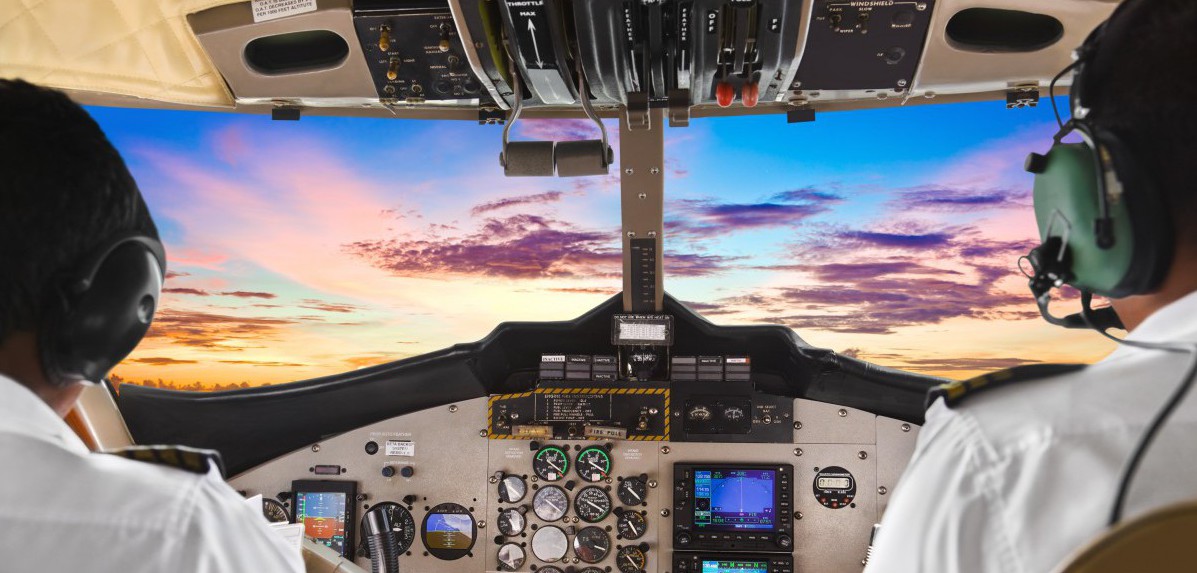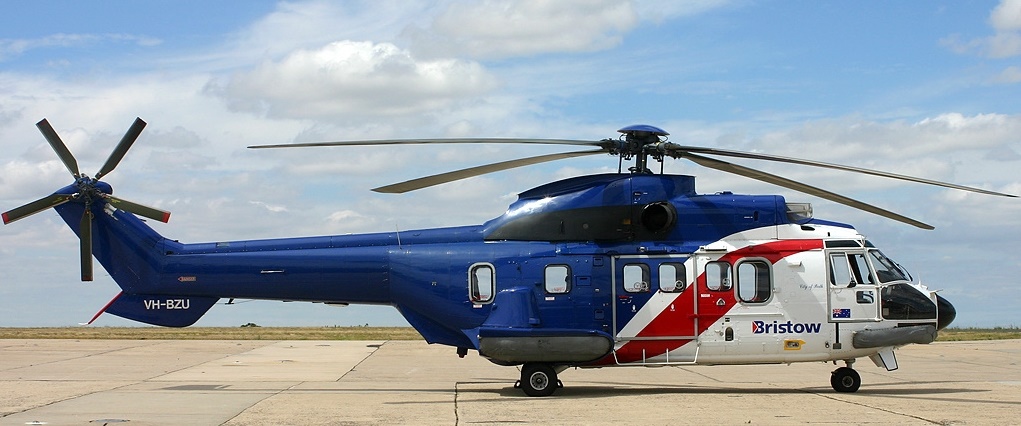FAA Aviation Safety Training: Prevent Loss of Control Accidents
FAA Fly Safe: Prevent Loss of Control Accidents
 The FAA and general aviation (GA) group’s #FlySafe national safety campaign aims to educate the GA community on how to prevent Loss of Control (LOC) accidents this flying season.
The FAA and general aviation (GA) group’s #FlySafe national safety campaign aims to educate the GA community on how to prevent Loss of Control (LOC) accidents this flying season.
What is Loss of Control (LOC)?
A Loss of Control (LOC) accident involves an unintended departure of an aircraft from controlled flight. LOC can happen because the aircraft enters a flight regime that is outside its normal flight envelope and may quickly develop into a stall or spin. It can introduce an element of surprise for the pilot. Contributing factors may include: poor judgment/aeronautical decision making, failure to recognize an aerodynamic stall or spin and execute corrective action, intentional regulatory non-compliance, low pilot time in aircraft make and model, lack of piloting ability, failure to maintain airspeed, failure to follow procedure, pilot inexperience and proficiency, or the use of over-the-counter drugs that impact pilot performance.
Current topic:
Enhanced Vision Systems (EVS) fall into two main categories: Enhanced Vision and Synthetic Vision. Both of these technologies can help reduce GA accidents involving reduced visibility. Weather, night, smoke and other obstructions to vision can compromise safety, especially when flying close to the ground. Although EVS technologies can help improve safety in these situations, it does take time for pilots to become proficient in their use.
Enhanced Vision often uses infrared cameras to display runway obstructions and terrain in bad weather or on a dark night. You know that the sensors on your airplane are giving you the latest information, so you can use it tactically.
Synthetic Vision combines imagery from sensors and navigation systems with your own natural vision. It uses information from navigation databases to create a picture of the flight environment and overlays that picture with aircraft instrumentation and weather information to create a single image. Keep in mind that weather information depicted by a synthetic vision system can be five or more minutes old. So, it’s best to use this technology strategically, especially in convective weather.
Safety Flying Tips for Pilots
You can reduce training time and make time in the aircraft more productive if you log time on an avionics simulator.
Expect that the transition to Enhanced or Synthetic Vision technology may take longer if the airplane you train in has unfamiliar glass cockpit instrumentation.
Most manufacturers have personal computer-based simulations for their products.
Keep your software and databases updated.
Maintain your proficiency and train with a Certified Flight Instructor (CFI) who is proficient on the equipment in your airplane.
Message from FAA Deputy Administrator Mike Whitaker:
“The FAA and industry are working together to prevent Loss of Control accidents and save lives. You can help make a difference by joining our Fly Safe campaign! Each month on FAA.gov, we’re providing pilots with a Loss of Control solution developed by a team of experts. They have studied the data and developed solutions – some of which are already reducing risk. We hope you will join us in this effort and spread the word. Follow #FlySafe on Twitter, Facebook and Instagram. I know that we can reduce these accidents by working together as a community.”
Did you know?
- Approximately 450 people are killed each year in GA accidents.
- Loss of Control is the number one cause of these accidents.
- Loss of Control happens in all phases of flight. It can happen anywhere and at any time.
- There is one fatal accident involving LOC every four days.
Learn More:
- AC 90-106 Enhanced Flight Vision Systems- http://www.faa.gov/documentLibrary/media/Advisory_Circular/AC%2090-106.pdf
- Brushing Back the Dark, FAA Safety Briefing JanFeb 2014, P20, https://www.faa.gov/news/safety_briefing/2014/media/JanFeb2014.pdf
- InFO 11004- https://www.faa.gov/other_visit/aviation_industry/airline_operators/airline_safety/info/all_infos/media/2011/InFO11004.pdf
- Aircraft Owners and Pilots Association (AOPA) article and video New infrared system turns night into day, January 10, 2013.
- AOPA Live NASA Enhanced Vision video.
- AOPA Margins of Safety videos on AOA.
- The FAASafety.gov website has Notices, FAAST Blasts, online courses, webinars and more on key general aviation safety topics.
- Check out the 2015 GA Safety Enhancements (SEs) fact sheets on the main FAA Safety Briefing website, including Flight Risk Assessment Tools.
- The WINGS Pilot Proficiency Program helps pilots build an educational curriculum suitable for their unique flight requirements. It is based on the premise that pilots who maintain currency and proficiency in the basics of flight will enjoy a safer and more stress-free flying experience.
- The General Aviation Joint Steering Committee (GAJSC) is comprised of government and industry experts who work together to use data to identify risk, pinpoint trends through root cause analysis, and develop safety strategies to reduce the risk of accidents in GA.
An FAA fact sheet outlines GA safety improvements and initiatives.
The Fly Safe campaign partners are: Air Bonanza Society (ABS) Air Safety Foundation, Aircraft Owners and Pilots Association (AOPA), Aircraft Electronics Association (AEA), Experimental Aircraft Association (EAA), FAA Air Transportation Center for Excellence (COE) for General Aviation, FAASTeam, GA Joint Steering Committee, General Aviation Manufacturers Association (GAMA), Lancair Owners and Builders Organization (LOBO), 1800wxbrief/Lockheed Martin, National Air Transportation Association (NATA), National Association of Flight Instructors (NAFI), National Business Aircraft Association (NBAA), Soaring Society of America (SSA), Society of Aviation and Flight Educators (SAFE), and the U.S. Parachute Association (USPA).















